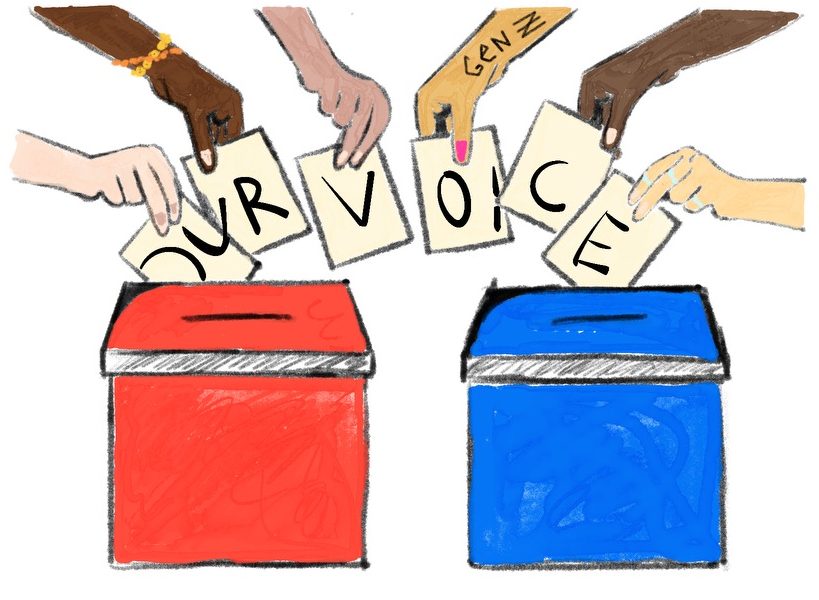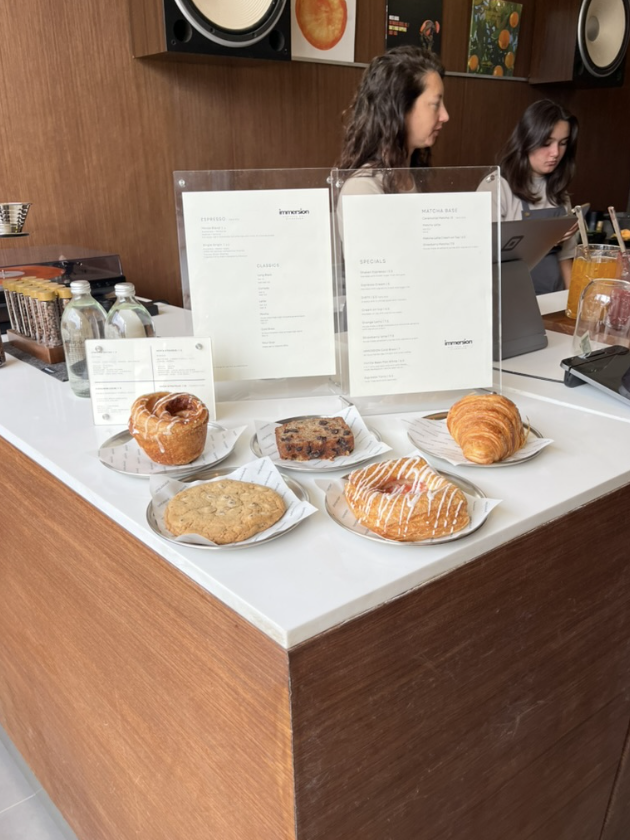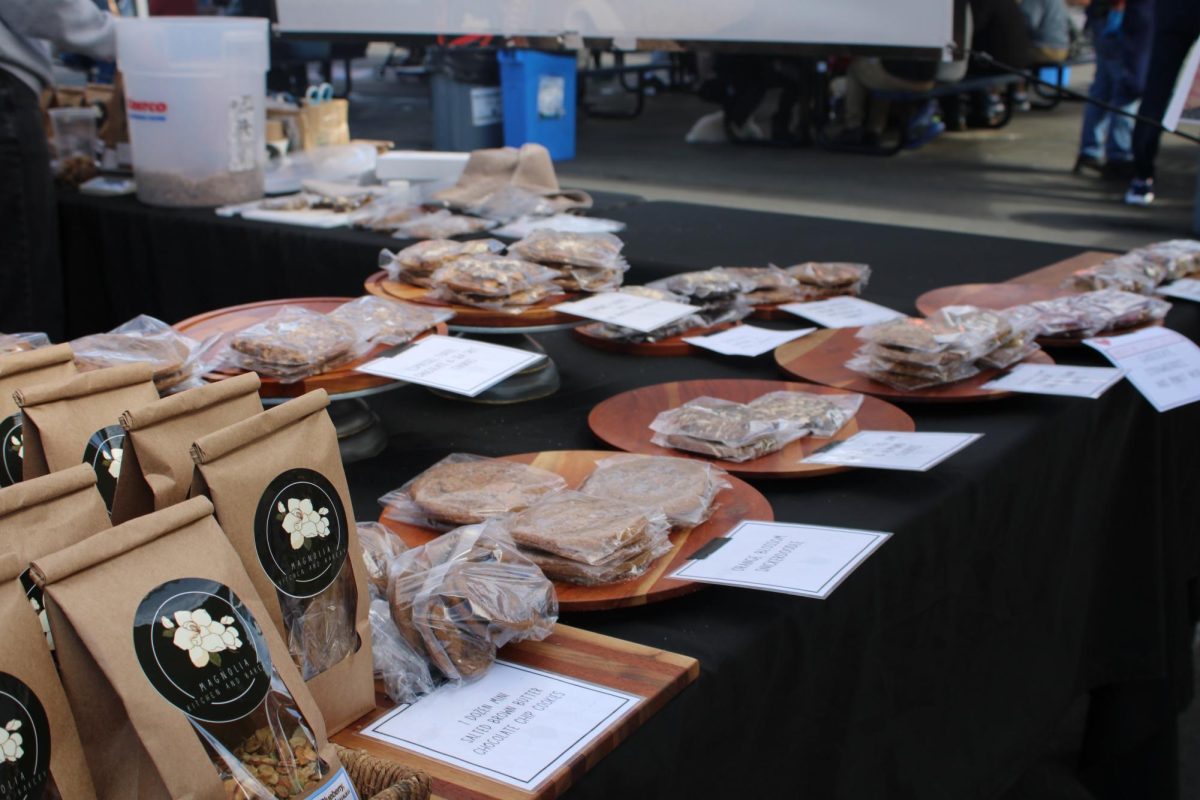Sabrina Feldman (‘26) was on a plane when she heard the news. “I was shocked,” she said, “the man in the row next to us yelled to the whole plane, “TRUMP GOT SHOT.” As the nation witnessed the assassination attempt on Trump from their devices, the incident caught the attention of the younger American population.
Jayla Stafford (‘25), founder of the Young Conservatives Club, expressed devastation at the incident. “It makes a lot of people question their safety in this country… no matter where anyone falls on the political spectrum.” Alumnus Gerard Blake (‘24) worried that the assassination would cause “mass riots in the streets and turmoil.”
Preceded by subpar performances from President Joe Biden and Trump in the 2024 debate, the assassination attempt wasn’t the only recent event that captured young audiences. When Biden announced his exit from the race just eight days later and endorsed Vice President Kamala Harris, it shook up the entire race dynamic.
As the next generation of voters, recent events in the presidential race range from exciting to disheartening — a whirlwind of emotions. While the assassination attempt garnered its own reactions, we want to share our holistic reflections on the 2024 election and political diaspora with the Bishop’s community.
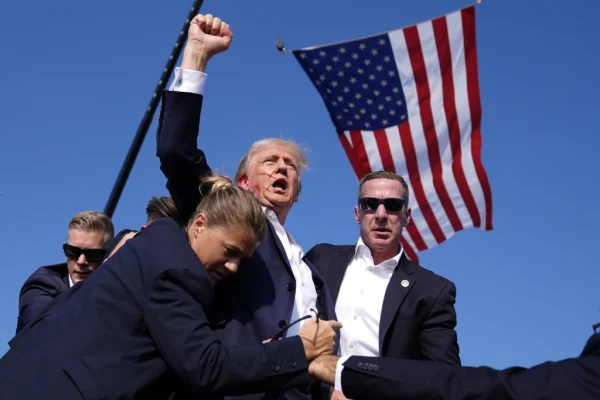
In the context of the assassination attempt, the use of violence to make political statements is both frightening and frustrating. The insurrection at the Capitol on January 6th (where rioters protested the 2020 election results), the 2022 hammer attack on Paul Pelosi (former House Speaker Nancy Pelosi’s husband), and Virginia Congress workers attacked by a bat in 2023 are just a few examples of targeted political violence against government officials. Is partisanship taking a violent turn?
Political violence is nothing new. Throughout history, assassination attempts on presidential candidates and political figures have been common. Tragedies trace back to presidents Abraham Lincoln and John F. Kennedy.
Regarding the assassination attempt, Naveen Hernandez (’26) voiced how given “the current political climate, this kind of event was…perhaps even expected.” Jayla said she believes “politics always comes violence, especially when it comes down to choosing [a political] side.” The deepening divisions between the Democrats and Republicans in recent years only turn the political landscape more violent.
Even so, our generation’s normalization of political violence is harrowing. It’s unsettling that we skim acts of political violence as mere headlines that get lost in the news cycle.
Thomas Crooks, Trump’s attempted assassin, was only 20 years old. While there is no excuse for attempted murder, his age causes us to question his motives — which have yet to be determined by officials. As Vera Bergengruen reported in TIME, “What is clear, experts say, is that the political environment plays a role. Crooks grew up in a nation where high-profile attacks against elected officials have become increasingly common.” Indeed, the number of threats made to Congress members increased by 500 to 8,008 total in 2024, according to The Washington Post.
It’s not just the youth who have become used to this culture — 78% of Americans view political violence as a major problem, per a 2023 study done by States United Democracy Center, a nonpartisan organization. However, the study found that support for political violence varied by issue: 34% justified it if the government banned abortions, while 53% justified it if the government harassed and imprisoned critics. In December 2021, The Washington Post and University of Maryland polled 1,101 adults nationally and found that 1 in 3 Americans said violence against the government can be justified.
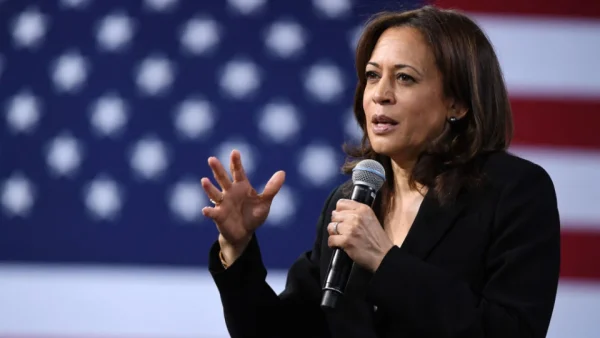
Sabrina noted that post-assassination attempt, many people took to the internet to express their reactions. “There have been many people online that are posting phrases wishing that the bullet had killed Trump,” she said, “That’s worrisome: the fact that people are okay with posting publicly that they wish death upon a presidential candidate.”
Alumna Marianna Pecora (‘22), the Director of Communications at Voters of Tomorrow, a left-leaning organization striving to increase political engagement among Generation Z, said,
We were also disappointed in the presidential race itself. Had Biden not pulled out of the race, he and Trump would’ve been our only options. Berlage articulated a common reaction: “The thought of voting for either Trump or Biden makes me feel ill.”
Berlage voiced that most candidates today “only pretend to care about [America’s] issues, and then go back to arguing about what they really care about: who has the better golf game;” and that is exactly what was displayed in the presidential debate between Trump and Biden.
In a world dominated by trendy social media clips, it isn’t foolish to take these debates in complete earnest, as they are vital to the campaign process. More than 7.3 million people tuned into the Biden-Trump debate, so these candidates should know better than anyone else that whatever they say has the potential to be twisted and used against them, or even worse—turned into an Internet meme released for public shaming.
“The debate was not a good night for either one of the candidates,” said Pecora. With Biden racking his brain for complete sentences and shielding his son’s honor and Trump fighting the “sex with a porn star” and hush money allegations — they were more preoccupied over defending their personal honor than defending their future American policies.
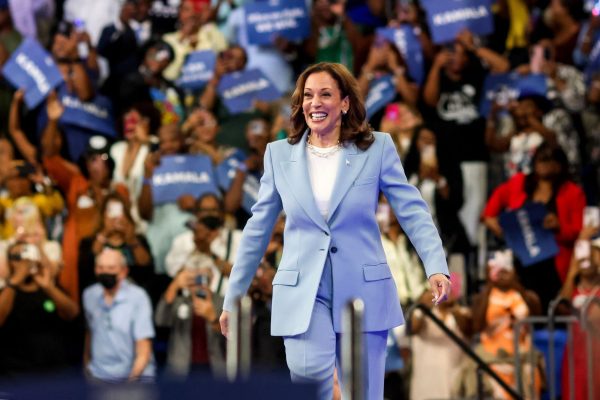
“It was not a debate on policy, and instead focused on personally attacking the other candidate…This is a very poor look for America especially on its youth, and it only encourages people to stay away from politics during a time when involvement is critical,” Naveen said.
Many were left to digest the media’s coverage of the fallout of the debate. Meme compilations of the presidential debate crowded Youtube, clips of Trump’s two minutes spent over Biden’s supposedly sad golf swing congest Instagram reels, and of course, Biden’s dangling half-sentence clauses left a knot in the throats of the members of his party, his biggest donors, and other high-profile supporters.
The role of the media on young voters’ perceptions of democracy and elections span beyond the debate. Quite literally, the changing priorities of the media landscape have caused candidates to change their tactics to gain popularity.
In July, Kamala Harris, the Democrat’s presidential nominee, caught the attention of millions of young adults with her viral “you think you just fell out of a coconut tree” audio. As a result, her exponentially growing online presence engages the younger voting demographic, an “advantage” for the Democrats that the Trump campaign is combatting by emphasizing personal attacks.
At a National Association of Black Journalists gathering on July 31st, Trump falsely asserted how he “didn’t know [Harris] was Black until a number of years ago.” He further attacked her identity, saying she was “Indian all the way” but suddenly “became a Black person,” in an effort to attack her identity. Trump’s Vice President pick, Ohio Senator JD Vance, also attempted to attack Harris’ identity as a woman, calling her a “childless cat lady.”
Democrats also attempt to alter voters’ perceptions of the opposing candidate. While Biden’s campaign tried to paint Trump as a threat to democracy, Harris’ running mate, Minnesota Governor Tim Walz, opted for a new way to characterize Trump and Vance: calling them just plain “weird.”
U.S. Government and Politics teacher Ms. Katy Rees explained that “As a country, we have to ask the question, are we looking for good campaigners or are we looking for good presidents? I think the media landscape has really rewards those who are good campaigners and not necessarily those who would make a good president.”
In other words, recent campaigns — which catch the attention of the youth primarily through social media and news — have been successful because of flash and entertainment.
Because the media depends on viewership for profit, organizations are incentivized to report on the most flashy, entertaining news. And when the media is viewership oriented, candidates take advantage of this — through being flashy — to gain publicity. That is how Trump, a man who, prior to 2016, had no political experience, was able to become president: he grew his pre-existing celebrity and became popular due to his entertaining style and unfiltered comments in debates and interviews.
However, a profit and viewership-driven media landscape tends to focus more on the person, not the policies. Ms. Rees felt that the lack of understanding of policies, government, and leadership roles is problematic because it leaves viewers susceptible to media interpretations. “We are not demanding that our news sources pay attention to certain things, we are paying attention to what the media tells us to pay attention to,” she said.
Young voters agree that the media and both parties’ campaigns have focused on people, not policies. Naveen said that, “People these days don’t understand politics. It is totally about the person, not the candidate…people judge the person more than policy these days, and that is totally shifting the tide of this election.” Blake added to Naveen’s point, explaining that, people don’t “really vote based on policies at all, it is almost all about character and how a candidate makes them feel.”
Audrey Lin (‘25) thought that while the media does not cover policies very well, many do not care about the coverage even when there is some.
Ms. Rees also brought up a recent trend she noticed with her students’ media intake. She explained that “my students are far more aware of not just national but current global issues than I think most young students were 15, 20, 30 years ago,” however, “the media that they consume often presents the facts in a very neat package or abbreviated form, not really showing the nuance or sharing the complexity of the issue.”
However the media has portrayed the election thus far, voters now choose between two drastically different candidates: Kamala Harris — the current Vice President and first POC woman to be on the ballot — and Donald Trump — a white male former President and convicted felon. Pecora believes “This is no longer a race between someone young people hate and someone young people tolerate.”
Harris represents an entirely new candidate profile. She is quickly garnering support too, fundraising $81 million in the first 24 hours of her campaign. Pecora feels there’s a lot of excitement surrounding the election. This race marks an exciting shift in voter demographics, as young people, specifically Gen-zers, are eligible to vote. In the 2016 election, according to Pew Research Center, only a small percentage (1%) of voters were from Generation Z. In 2020, that number was up to 8%. Now — per a study done at Tufts — in 2024, 41 million members of Gen Z will be eligible to vote. The election is the first one Pecora can vote in, and the first one many seniors at Bishop’s will be voting in.
With only a few more months before polls open, the timeline of events feels surreal.
An insurrection on the Capitol. A debate with candidates comparing golf scores. Biden calling Ukrainian president Zelensky by the name Putin. Trump’s convictions. An attempted assassination. The Democratic presidential candidate unprecedentedly swapped just three months before the election.
And with everything happening in quick succession, it is easy to feel uncertain about what the future holds. We are the next generation. The next four years are incredibly important to us. How can we not worry?
As a college student, Berlage expressed this sentiment: “I feel as though nobody listens to our age demographic despite us often shouting the loudest. In fact, over the past couple of years, the Overton window for what counts as a young voter has increased in age because of America’s entrenched gerontocracy,” he said. “My peers and I don’t know when we will be able to become homeowners. I’m insecure about the prolonged path of stagnating real wages. I hate seeing my tax dollars go to foreign wars while American families struggle to keep paying rent.”
Pecora provides a more positive perspective. “I am ridiculously hopeful for our generation and what we can accomplish because we have shown up in a way that young people haven’t for this generation of politicians previously, which means they can’t deny us,” she said.
To disheartened Gen-Zers, Pecora says it all starts at the ballot box. “If you want to see…change happen, you have to be the one willing to take that into your own hands.”
Our political landscape has been wrought with division for so long. It is sullied with people from both sides of the aisle focusing on personal attacks, rather than the policies that will impact our future. It is tiring. Perhaps it is up to the next generation, our generation, to change that.





